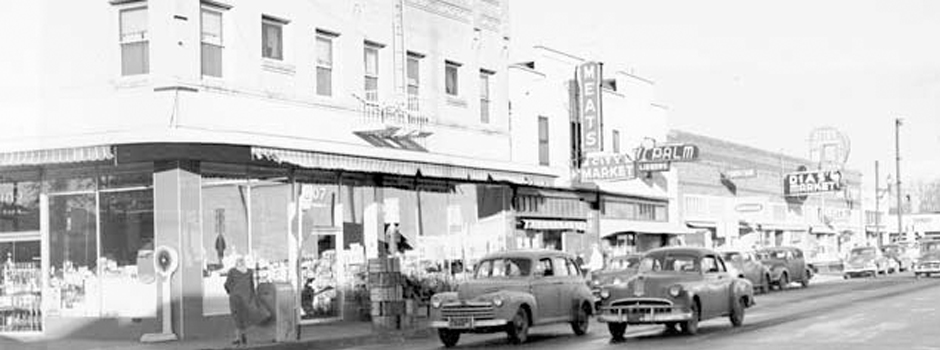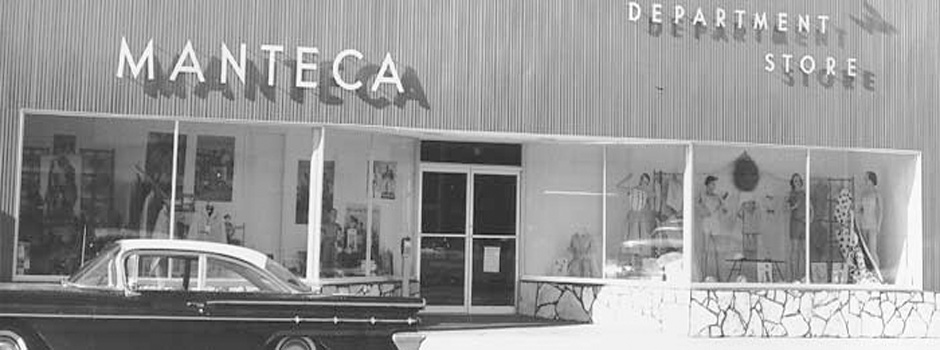History
Manteca itself is a relatively young town, first settled by a few pioneer farmers in the heart of one of the greatest agricultural areas in the world. A combination of good soil, excellent climate, and clean water has insured its destiny as a prosperous farming center. There was little activity in Manteca that was not related to agriculture until World War II. Changes came slowly up through the 1970’s, but today Manteca is shedding much of its old image with new high-tech industries. It has become a “bedroom community” for the industrial sites west of the Altamont Pass.

Before the first settlers came, there were few Indians living permanently here on what was then known as the “sand plains”. As the California Gold Rush subsided, permanent settlers came to the area. On the first large land holdings, the principle productions were grain and cattle. During this period this valley settlement was called Cowell Station, named after Joshua Cowell who was later known as the “father of Manteca”. Joshua Cowell crossed the plains in 1861 and took up land in what has become the center of town, locating on the corner of what is now Yosemite and Main, where the Bank of America and its parking lot now stands. At one time he owned most of Manteca with a claim to 1,000 acres and he rented another 1,000. He had the honor of being the first Mayor when the town was incorporated in 1918.
In 1873, when the Central Pacific Railroad went through this area, the track was laid through the center of the Cowell Farm. At first, the train stopping point was merely a boxcar called Cowell Station. Because there was another Cowell Station south of Tracy named after Wright Cowell, a brother of Joshua, the railroad and the farmers agreed to a name change. The new name chosen was Monteca. The citizens of the town were justly dismayed when the railroad printed the first tickets and found the name misspelled, “Manteca” (Spanish for “lard”). Many of the towns people were unhappy with the error, but it was never corrected.

In 1902, J.J. Overshiner built the first store building which was occupied by a general store and barber shop. The residential area of the city consisted of only a few homes by 1910, with the population at about 100. Shortly after the opening of the first store, the citizens petitioned for a post office.
Cost-effective, reliable irrigation was essential for the development of the area. It was slow in coming but finally in 1909, an election was held to form the South San Joaquin Irrigation District and to authorize a bond issue. The bonds were not issued until 1913. Irrigation water was diverted from the Stanislaus River about 18 miles northeast of Oakdale. The district built all the lateral ditches and prepared to deliver water to every 40-acre tract. That was the town’s real beginning of growth.
East Union Cemetery is one of the oldest landmarks of the entire county. The cemetery dates back to 1872 and was incorporated in 1877. Manteca’s first school was built in 1857. The name given was East Union (to distinguish from Union School in Lathrop). In 1913, the school was destroyed by fire. After many years of discussion, the first local high school classes met in huts in 1920. Previously, many students attended high school in Stockton via train. On January 26, 1923, the new high school building was dedicated and it remained a city landmark until it met the wrecking ball in 1969.

The Manteca Canning Company was organized in 1914 and was in operation almost continuously until closing in 1964. Spreckles Sugar Company was constructed in 1916. Sadly, the company closed the plant. The first cheese factory was established in 1921 and the Kraft Company opened a plant in 1935 which operated until 1957. Other manufacturing and non-manufacturing companies include Sharpe Army Depot, Libbey Owens Ford, Simplot, Olin Industries, etc.
Manteca Hospital opened an 18-room facility on the corner of Yosemite and Sequoia in 1919. It operated only a few years and is now a homeless shelter. After many years without a hospital, a new 49-bed facility was built on Cottage Avenue in 1962. It has been expanded to 73 beds with complete services. Kaiser opened their hospital in 2005. Kaiser Permanente opened a clinic in 1998.
Today Manteca has over 72,000 residents and is the home of Big League Dreams, Bass Pro Shop, Costco, Walmart and many other amenities attracting thousands of tourist each year.
